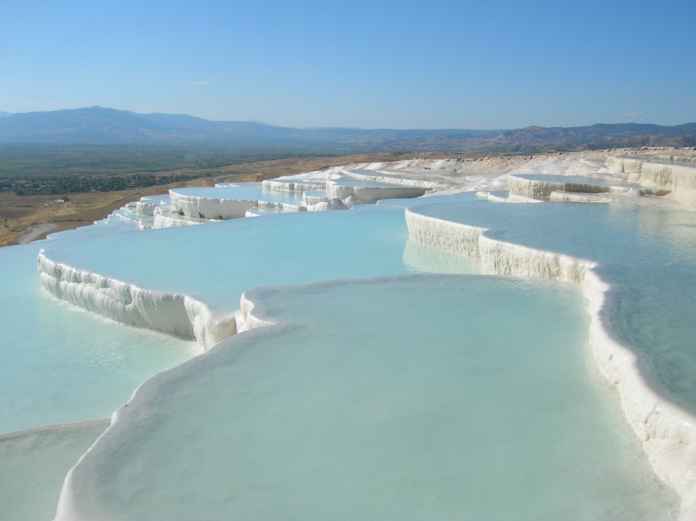Pamukkale, which literally means “cotton castle” in Turkish has been used as a spa since the second century BC. The calcium carbonate also know as the travertine features are originated in the shifting of a fault in the valley of the Menderes river. The Pamukkale contains slightly radioactive minerals, the calcium and hydrogen carbonate react to create travertine and limestone. And this is the basic fact behind Pamukkale’s whiteness and creation of pools.
With varied temperatures it is a home to seventeen hot water springs from lukewarm to boiling hot pools. Pamukkale is an geological wonder of the ancient city of Hierapolis. And these two have seemed to come together, merged almost in to one, over the centuries.
Many visitors come each year to join in the spring waters and for the natural beauty of the place, although it is abandoned as an inhabited city. Pamukkale is also visited to experience the curing effects of the water, said to help with high blood pressure, eye and skin diseases and circulation problems among many others.
Pamukkale is just a site of half buried ancient buildings which have been covered by calcium carbonate deposits over a thousand years. Yet for many it is simply the spectacle of the place which draws them to Pamukkale, the Cotton Castle.










